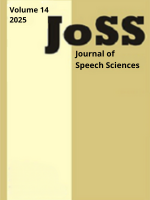Abstract
The rules of a language interact with world knowledge in order to generate the meaning in certain verbless sequences, when the latter are conjoined to clauses. In such cases the cognitive representation corresponding to the verbless sequence is completed through the insertion of a copy of the schema evoked in the clause, so as to generate a well-formed cognitive structure. This happens by effect of a rule of schema retrieval, which is part of the structure of the language, but is also subject to grammatical, semantic, and symbolic conditions, which instantiate a degree of interference between cognitive and formal spaces. This process is triggered by the presence of certain coordinating conjunctions, in particular e ‘and’, and is subject to conditions of semantic parallelism between the two members of the construction. The phenomenon is studied in relation to the data of standard Brazilian Portuguese.
References
1. Jackendoff, Ray. 2002. Foundations of language – Brain, meaning, grammar, evolution. Oxford University Press.
2. Langacker, R. W. Concept, image, and symbol: The cognitive basis of grammar. Berlin: Mouton De Gruyter, 1991.
3. Perini, M. A. Thematic relations: A study in the grammar-cognition interface. Cham, Switzerland: Springer, 2019.
4.Perini, M. A. Function and class in linguistic description: The taxonomic foundations of grammar. London: Palgrave Macmillan, 2021.
5. Perini, M. A. Linguagem e cognição: Esquemas, gramática e os limites da língua. Petrópolis: Ed. Vozes, 2024.
6. Trask, R. L. A Dictionary of grammatical terms in linguistics. London: Routledge, 1992.

This work is licensed under a Creative Commons Attribution 4.0 International License.
Copyright (c) 2025 Mário Alberto Perini


